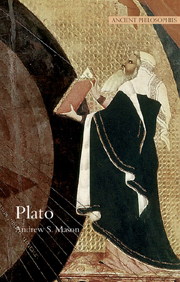3 - Plato's metaphysics: the “theory of Forms”
Summary
One of the best-known aspects of Plato's thought, and one of the most pervasive, is his belief in “Forms”: that is, very roughly, in essences shared by those things that (in our terms) belong to a single kind or possess a single property. For instance, there is in his view something, the essence or nature of goodness, that all good things have in common; this is what Plato calls the Form of the good. Likewise there is an essence that all large things have in common, one that all living creatures have in common, and so on. Plato has a distinctive conception of these essences, central to which are the claims that they are eternal and unchanging, that they are grasped by pure reason rather than by perception, and that they do not depend for their existence on their perceptible instances.
Plato does not, in fact, always use the term “Form” to denote these essences; his most common expression for them is “the so and so itself” (e.g. “the good itself”, “the living creature itself” and so on); on some occasions he also uses abstract nouns to describe them (e.g. “justice itself”). However, he does sometimes refer to them by two Greek words, eidos and idea, both of which can be translated by the English word “form”; and this way of referring to them, which is particularly useful when speaking of all the Forms as a class, has become standard in later writers, beginning with Plato's pupil Aristotle in his discussion and criticism of the theory.
Information
- Type
- Chapter
- Information
- Plato , pp. 27 - 60Publisher: Acumen PublishingPrint publication year: 2010
Accessibility standard: Unknown
Why this information is here
This section outlines the accessibility features of this content - including support for screen readers, full keyboard navigation and high-contrast display options. This may not be relevant for you.Accessibility Information
- 1
- Cited by
